#horus icons
Text

The End and The Death vol III - Oll Persson stands his ground against Horus. By Mikhail Savier
#ollanius pius#oll persson#dan abnett#warhammer#horus lupercal#the horus heresy#black library#I used to have a fanart version as my icon#actually Olly was what my original blog title was named after
176 notes
·
View notes
Text
So now that we have this:
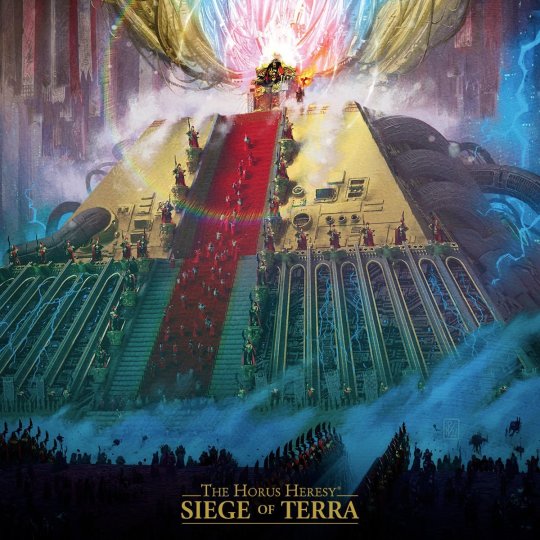
We know for sure Malcador was sitting on it like this:

#Warhammer 40k#Warhammer 40000#Warhammer#Horus Heresy#The Horus Heresy#Siege of Terra#Emperor of Mankind#Malcador#Size inconsistency and Neoth#Name a more iconic duo
608 notes
·
View notes
Text

#illustration#drawing#camille de cussac#artists on tumblr#colorful#kids#cleopatre#egypt#pyramid#icons#gods#horus#egyptian#art
20 notes
·
View notes
Text
Horus, drawing:
👫🏻
This could be us,
But I don’t even know you really want it..
Seth: I never said to fall in love with me
Horus: You kissed me
Seth: I did
Horus: So now face the consequences!!!
Seth: Those being?
Horus: You kissed me which made me fall in love with you, and you being the first for me now I want it to be real, everlasting love and love together forever.
Seth:.. why did you draw a woman and a man tho?
#horus ennead#horuseth#seth ennead#seth manhwa icons#horus x seth#ennead fanfic ideas#incorrect ennead#ennead manhwa
80 notes
·
View notes
Text
People often said that pilots were unimpressive when outside their craft, and Revila was intensely aware of how much that applied to herself and Poleyn. Disconnected from the power and strength of the Wrath they became just two skinny Nostraman street kids wearing dark blue VIII Legion flight suits in dire need of a wash.
She already itched to fly again.
Chapter 3 of SF2UA is up 🦇
#The Coffin of Poleyn and Revila#yes the Spider is a gigachad version of Kenneth Branagh in Wild Wild West#no i will not elaborate#couldn't resist a nod to Ruven's iconic “reeks of mating” line#Misleir will be keeping his helmet on until the most dramatic possible moment#sorry i don't make the rules#wh40k#warhammer 40000#warhammer 40k#horus heresy#night lords#wh30k#fanfic#fanfiction#ao3#neves writes#oh did you think poleyn was a good guy? wrong planet wrong people lol#sf2ua
7 notes
·
View notes
Note
🥚

"That's.... that's not what I meant when I said I like kids...."
#Horus' thoughts rn: WHAT THE FUCK SHOULD I DO WITH THIS#ic#also hope u dont mind me making a few of my own icons too skdkfkk
2 notes
·
View notes
Text
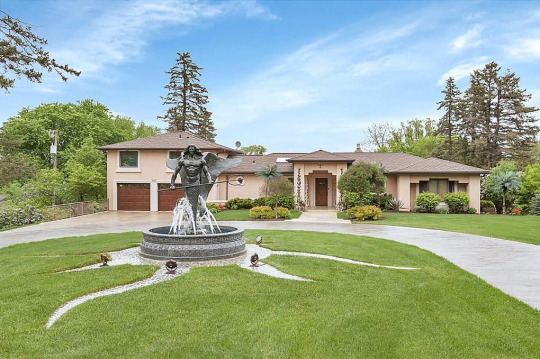
I'm so disappointed. I posted The Poseidon House in St. Cloud, MN a couple of years ago, then it appeared on HGTVs "Ugliest House in America." It didn't win, so the owners renovated it themselves and it's back on the market for $699,900.

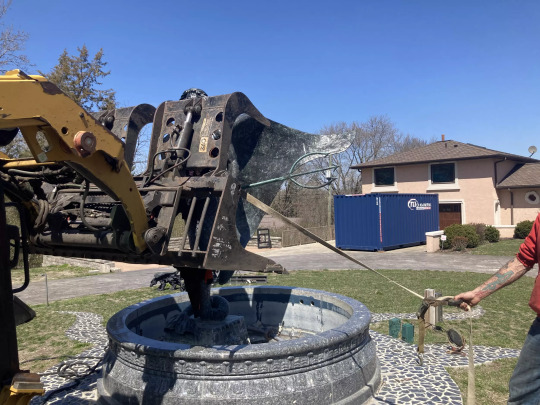
NOOOO! They removed the iconic Poseidon statue. That was going too far. Fun fact: When his marriage broke up, the owners offered Aquaman Jason Momoa the house to stay in. He didn't take them up on it.
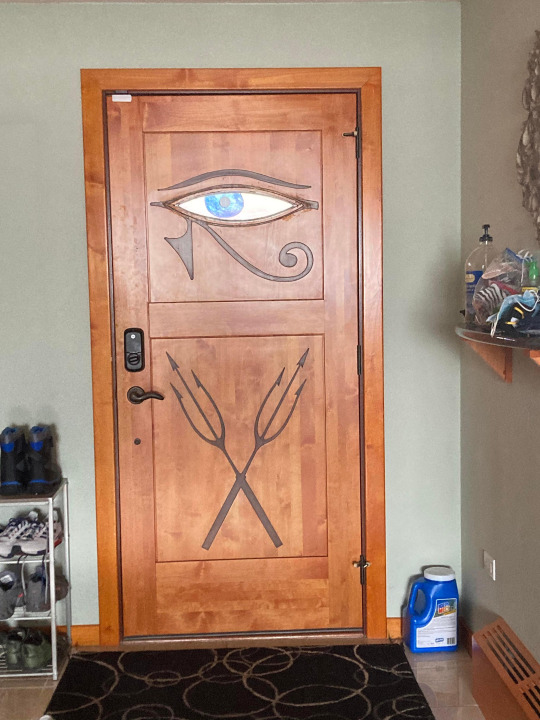
Poseidon is a Greek God and the Eye of Horus is an Egyptian symbol of well-being, healing, and protection. I guess the original owner just liked them both.


They left the kitchen and it's in excellent condition. It's a nice house, I think it only needed a refresh.

There's nothing wrong with the dining room. It just was repainted gray.


Basically, they just cleaned up the living room, but left it untouched.

Looks like they left the blue lighting. Love how the floor glows white.


Goodbye, cool bedroom.

I think that this may be the primary bedroom. It has the same type of stained glass window as the bath.


The largest bath stayed the same. The cabinets are very nice and the big stained glass window.

The home office is fine.
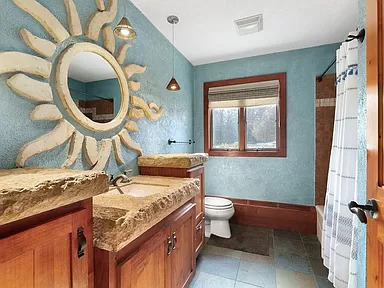
This bath appears to have remained. The cabinet is nice. It's not a bad room.

And, bd. #3 doesn't need reno.




The family room looks beautiful, now, although I kinda liked it before, too.
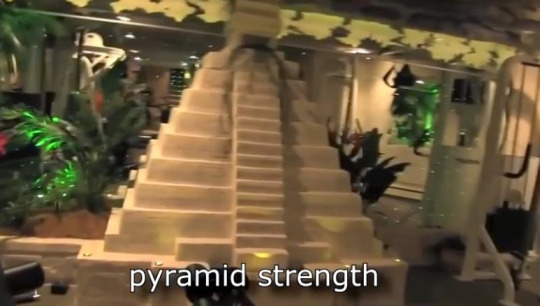
I actually liked the big pyramid.


The new bland home gym.


This bath underwent quite the transition.

There's a deck, a pool, and a lake.


Plus, a lovely guest house.
https://www.zillow.com/homedetails/32208-County-Road-1-Saint-Cloud-MN-56303/74867425_zpid/
103 notes
·
View notes
Text

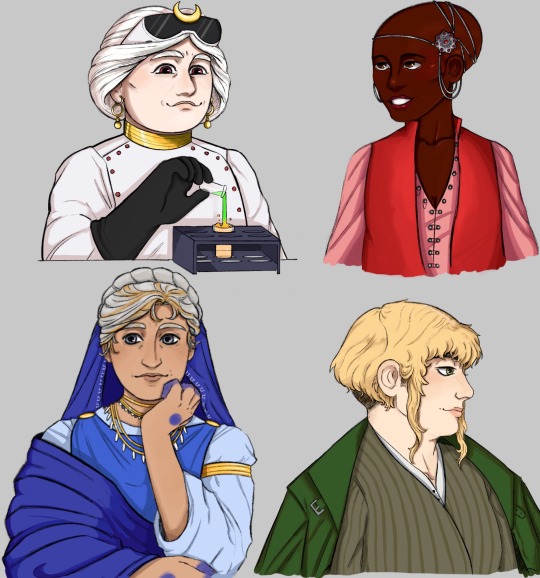
Decided to draw character designs for some Horus Heresy girlies. So here they all are!
Design notes below the cut:
Bequa Kynska: I decided to base her whole vibe slightly off Carla Rockmore. The patterns on the sleeve cuffs are inspired by this piece of 13th century Lebanese embroidery.
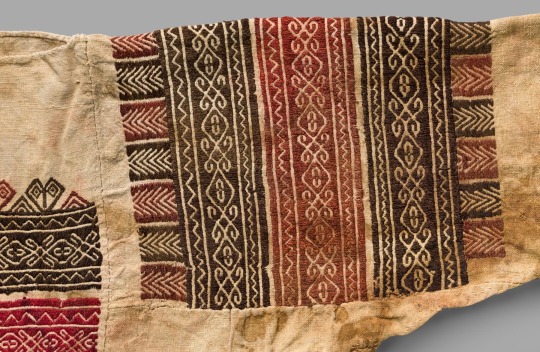
Cyrene Valantion: Her outfit is inspired by traditional Georgian and Azerbaijanian women’s dress, also some (indirect) inspiration from the works of Michael Nesterov and orthodox saint icons in general.
Lotara Sarrin: Her design didn’t change much because she’s already perfect. But I did make her look a bit like Amrita Sher-Gil’s “Three Girls” painting.
Amar Astarte: Based off the irl statuette of (possibly) the goddess Astarte that was found in the necropolis of Hillah, near Babylon. I also gave her a lab coat because cmon, evil scientist gotta evil science. (Statue pictured below)

Mersadie Oliton: Her clothes and jewellery are based off art from the 17th century Ottoman Empire, specifically from the Rålamb book of costumes.
Tarasha Euten: Clothing and hairstyle are inspired by statues from the Roman Empire, while the accessories are inspired by the Indus River Valley civilisation.
Euphrati Keeler: her clothing is inspired by a mix of fanart I’ve seen of her and this photo of a person from Elmali in traditional clothing (from the 1873 Vienna world fair)
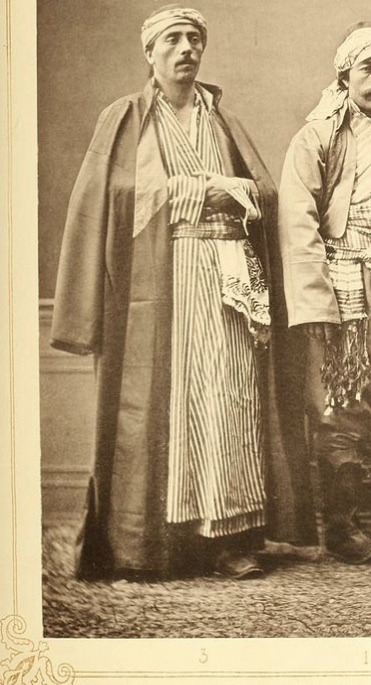
This started off as a fun design thing and ended up with me doing hours of historical clothing research lmao 💀
#*clears throat* I love women#warhammer#warhammer 4000#warhammer 40000#warhammer 40k#warhammer 30k#warhammer 30000#horus heresy#warhammer art#bequa kynska#cyrene valantion#lotara sarrin#amar astarte#mersadie oliton#tarasha euten#euphrati keeler
103 notes
·
View notes
Note
Do you know about egypt history?
If yes..I have two questions:
1) what did they call their king and queen?
2) what did upper class people wear?
And the lower people too?
Do I know about Egyptian history? I have a Tutankhamen Sarcophagus pencil tin 🤣😏
Your Majesty. The Pharoah's full titles were Horus, king of Upper and Lower Egypt (Nesu Bity/Nebty), the Sedge and Bee (nswt-bjtj) and Son of Ra.
Egyptian fashion changed over time but I'll focus around Tutankhamen's reign. Egyptians of all classes wore similar style of clothing, usually of linen because of how common it was. The lighter the linen, the wealthier the wearer. It was accessories and decoration that set them apart. The women would have worn long dresses, fastened at the shoulders and hanging down to the ankles. Upper class women had access to materials to give their clothes more ump. Lighter linen layers over sheathe dresses (kalasiris), coloured beaded sheaths or feathers or decorative pins for example. The men would have worn the iconic kilts, wrapped around their waists and long tunics in the chillier months. Shawls and cloaks would have been worn.
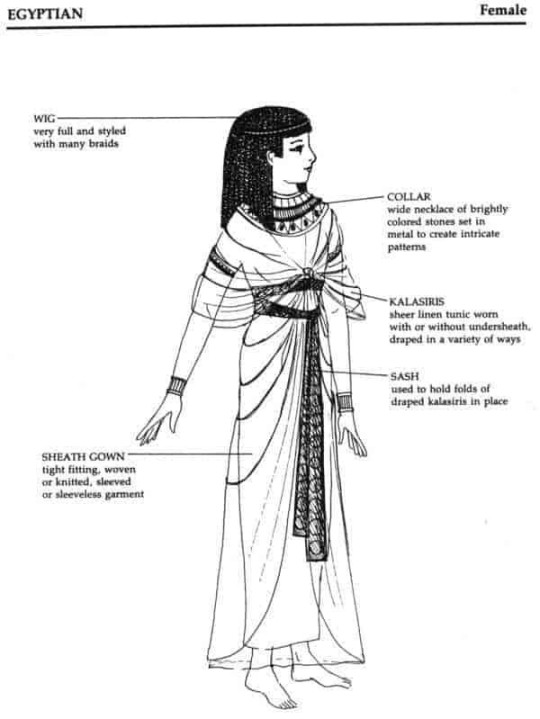
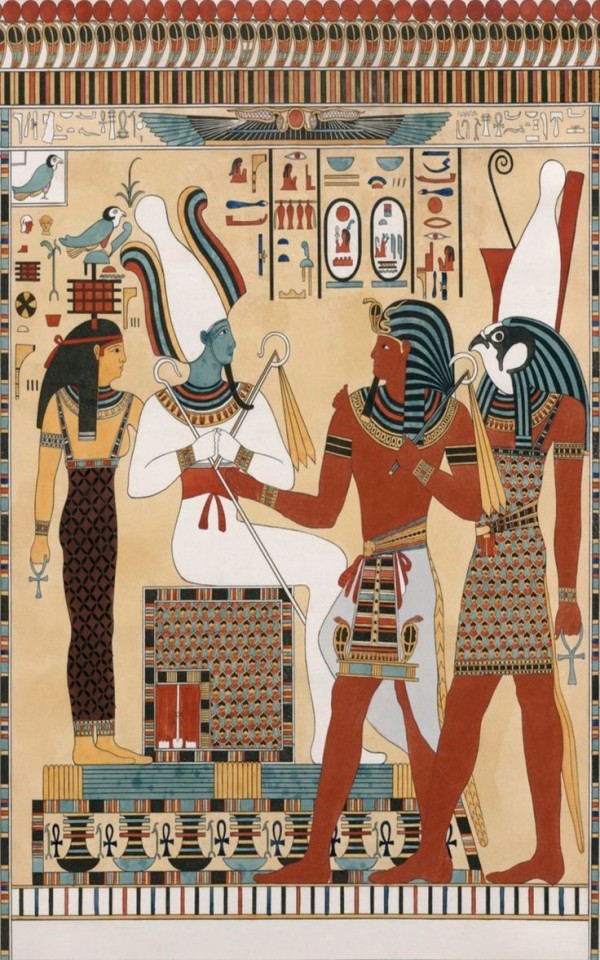
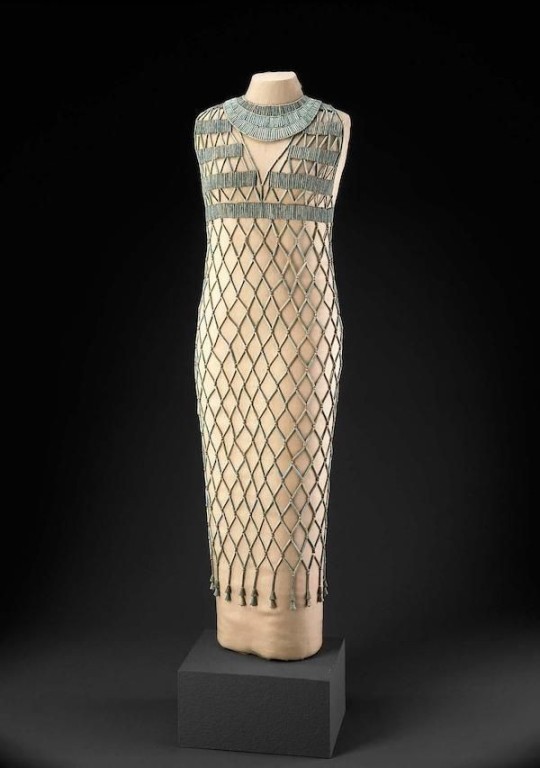

70 notes
·
View notes
Text
egyptian asteroid observations (part 2)
these observations are completely hypothetical. they are based on my (the those closest to me's) experiences with each aspect/ placement! please don't take everything i say as predestined, astrology is possible outcomes not guaranteed ones. this is just a starting place for when examining singular objects in an entire galaxy (these are not the only asteroids in affect for you). take what resonates and leave what doesn't!

☥ taurus (2°, 14°, 26°) and libra (7°, 19°) hatshepsut (2436) feminines are usually not as androgynous as this famous lady - they often are feminine in appearance, but dress mildly as though to hide these feminine qualities (ex: billie eilish is a libra hatshepsut)
☥ hatshepsut (2436) negatively aspecting moon likely struggle with feeling feminine and/or accepting/appreciating their femininity
☥ hatshepsut (2436) negatively aspecting mercury people are often quickly forgotten after their deaths despite them doing great things in their lifetime
☥ hatshepsut (2436) positively aspecting asc people are often known for their androgyny
☥ hatshepsut (2436) retrograde people tend to struggle with breaking trends in the world around them - the glass ceiling, generational cycles/trauma, etc.
☥ aries (1°, 13°, 25°) horus (1924) people are very spiteful, quick to anger, and often seek revenge
☥ cancer (4°, 16°, 28°) horus (1924) people frequently challenge matriarchal beliefs
☥ 5h horus (1924) people often toy with people when getting revenge - they like to drag it out
☥ horus (1924) positively aspecting moon people are quick to adapt to whatever challenges get in their way
☥ horus (1924) positively aspecting mercury people often do a lot of productive shadow work in this lifetime
☥ asc-horus (1924) aspects can be bird like in appearance - usual it is their nose shape - OR it could be in their eyes that they have predatory gaze (some have heterochromia)
☥ aries (1°, 13°, 25°), scorpio (8°, 20°), and capricorn (10°, 22°) isis (42) people have a hard time forgiving those who have wronged them
☥ libra (7°, 19°) isis (42) people are the birds of prey in the waking world - they have the ability to balance the world
☥ 5h / 7h isis (42) people often get into relationships in which they want to fix or heal the person
☥ 7h kleopatra (216) people are bound to have an epic love affair - their long term romantic partners likely tend to be foreign
☥ mercury ruled and/or aspecting kleopatra (216) people are often very strategic
☥ leo (5°, 17°, 29°) nefertiti (3199) people are likely to be labeled icons
☥ 1h, 6h, and 10h nefertiti (3199) people can give off a very mysterious vibe
☥ 5h, 6h, 8h, and/or moon aspecting nefertiti (3199) people are likely to have a lot of children
☥ 8h, scorpio (8°, 20°), uranus, and/or pluto aspecting osiris (1923) people have the ability to start over at any stage of life
☥ neptune-osiris (1923) aspects tend to attract people who would do anything for them
☥ 7h ptah (5011) can indicate your lifetime partner being a CEO of some sort
☥ ptah (5011) aspecting mercury and/or neptune people can be very good fantasy writers (they are great at worldbuilding)
☥ venus-sekhmet (5381) people can be very vengeful
☥ 9h sekhmet (5381) people might struggle with the high school to college transition

like what you read? leave a tip and state what post it is for! please use my "suggest a post topic" button if you want to see a specific post or mythical asteroid next!
click here for the masterlist
click here for more egyptian myths & legends
want a personal reading? click here to check out my reading options and prices!
© a-d-nox 2023 all rights reserved
#astrology#astro community#astro placements#astro chart#asteroid astrology#asteroid#natal chart#persona chart#astrology tumblr#astro notes#astro content#astro observations#astroblr#astrology notes#astrology observations#astrological help#egyptian history#egyptian#egyptian mythology#hatshepsut#asteroid2436#isis#horus#asteroid1924#asteroid42#nefertiti#asteroid3199#osiris#asteroid1923#ptah
102 notes
·
View notes
Text
Primarch gender and sexuality headcanons let’s go:
Lion: Gay man (he/him)
Fulgrim: Omnisexual, Demi-romantic, and gender-fluid (she/they/he)
Perturabo: aroace icon of a man (he/they/it)
Khan: Gay and ace-flux man (He/him)
Leman: bisexual man (he/it)
Dorn: aroace (low attraction, not none) man (he/him)
Konrad: aroace and genderfuck and batgender (he/it/bat)
Sanguinius: bisexual, non-binary (they/he)
Ferrus: gay man (he/him)
Angron: homoromantic, asexual man (it/he)
Guilliman: straight man (he/him)
Mortarion: cupioromantic, cupiosexual, genderfaun (he/they/it/dust)
Magnus: aromantic (very rarely feels romantic attraction) and Demisexual. Non-binary (they/them)
Horus: gay, Demi-man (he/they)
Lorgar: biromantic and ace-flux. Unlabelled gender (he/it)
Vulkan: aroace, non-binary (he/him)
Corvus: pansexual, aromantic. Birdgender and non binary (bird/he/it)
Alpharius Omegon: both aroace, and both go by he/they- although it’s unclear if that’s just because they’re two people
#warhammer 40000#warhammer 30k#warhammer 40k#primarchs#lion el'jonson#Fulgrim#Perturabo#jaghatai khan#leman Russ#Rogal dorn#konrad curze#sanguinius#Ferrus manus#Angron#roboute guilliman#mortarion#magnus the red#horus lupercal#horus heresy#lorgar aurelian#Vulkan#corvus corax#alpharius#Omegon#alpharius omegon
18 notes
·
View notes
Text
Egyptian gods: Hathor
Bastet might be a very famous Egyptian goddess today, but in Ancient Egypt she was definitively not as popular as the great goddess Hathor. This goddess was so famous, so popular and so beloved that, with time, she fused with many other goddesses – for example, she shares numerous attributes and domains with her “sister” Bastet, and she also ended up absorbing inside her the figure of Wadjet. I explained before how Isis took several attributes of Hathor, but in return Hathor also took the place of Isis in many ways. In fact, during the New Kingdom, the two “universal goddesses” were depicted in identical ways, and they could only be differentiated if their name was written alongside their portrait! Finally, Hathor was considered by many to be the “appeased” side of Sekhmet, instead of Bastet. In this alternate version of the Sekhmet myth, Hathor-Sekhmet originally came from Nubia, and after the almost-genocide of humanity and the “let’s get her drunk” episode, Ra decided that Hathor would live in Egypt rather than Nubia, ordering Shu and Thoth to bring Hathor to the country and help her settle down in her sanctuary of Dendera.
Hathor is the goddess of love, dance, music, sexuality and beauty. She was the cow-goddess who appeared sometimes as a woman with cow horns (and between said horns, a solar disk), other times as a cow covered in stars, and other times as a cow-headed woman. Her celebrations were all done in frenetic dancing, incessant music and joyful laughter: her iconic musical instrument was the sistrum, that often had in its handle the carving of a woman’s face with cow ears in her honor – it was believed that through its sounds, she could keep away wicked genies. Hathor was for a good portion of Ancient Egypt’s history the wife of Horus, and thus queen of the heavens and the gods alongside him – who had one son, to complete their triad, Ihy the god of music. Every year, Egyptians celebrated a religious holiday to commemorate the “beautiful meeting” or “beautiful encounter” – the wedding of Hathor and Horus, which ensured the fertility of the land. During this celebration people sang and danced to celebrate the beauty and joyfulness of Hathor, and she was offered a LOT of alcohol – as with Bastet, that I described before, a prominent element of the cult of Hathor was to keep her drunk so that Sekhmet would not wake up. However, what is truly interesting with Hathor’s relationship to Horus is that in the beginning of the Egyptian religion, in the oldest Egyptian myths, she wasn’t at all his wife… she was his mother. This is why her name actually means “House of Horus” – it was only later that Isis took her place as Horus’ mother, and she went down one level in the family tree, becoming his wife.
Nicknamed “The Golden One”, Hathor was a goddess of fertility, of life and of motherhood. She protected women and weddings, and she was the one girls prayed to in order to find a husband. She helped women by easing the pains of the labor, and she protected the newborns by banishing away the evil spirts that could threaten them. A very common motif in Hathor’s depictions is the “seven Hathors” – Hathor was said to have seven daughters, who all looked like her and shared her name, and their role was to be present at every human’s birth, and around the baby’s cradle tell those present what they knew about the fate and destiny of the newborn. Yep, exactly like fairy godmothers in fairytales! Hathor was also a nursing figure – as a motherhood deity and a cow-goddess, Hathor was considered to be the nurse of the pharaohs themselves, not only being depicted shielding them from above with her cow body, but also letting them drink her milk to feed them her divine power.
Hathor had a secondary role to play during the endless fights between Horus and Seth. At first, during the endless trials and debates concerning Horus’s right to the throne: when some of the gods became tired of Ra’s constant siding with Seth and his dragging of the trial, a deity named Baba insulted the sun-god by claiming his sanctuaries were empty, nobody worshiped him anymore and mankind had forgotten about him. Ra left the court and the company of gods, and isolated himself to sulk. Since without Ra nothing could be going on anymore, Hathor decided to give him back his good disposition and make him return among his peers – she went to him, and suddenly lifted up her dress, showing him her genital organs. This sudden display of exhibitionism made Ra laugh out loud, and this brought back joy in his heart, convincing him to forget the insult and return to the divine court. Later, when Seth removed the eyes of Horus as a punishment for him beheading his own mother Isis, it was Hathor that healed his wound and eased his suffering, by using either gazelle’s milk, or her own cow-milk.
The reason why Hathor is sometimes depicted as a cow covered in stars is because she became a sky goddess, and thus fused with Nut, the feminine embodiment of the sky who was also said to transform into a cow from time to time. Her star-covered belly became the sky through which Ra, the Sun itself, travelled during the day, making her somehow the “creator goddess” of the world, since she literally “gave birth” to the Sun every day. Her role as a sky deity also played in her function as the “House of Horus”, since Horus was a heavenly and solar deity – so his house/wife/mother would of course be the sky in which the sun resided. Hathor was thought to be the guardian of the four cardinal directions (East, West, North, South), and when depicted as the “celestial cow”, her four hooves were placed in these four directions. This role as a “cardinal goddess” resulted in her being depicted many times as a four-part goddess, with each cardinal direction having a different “animal” or “avatar” of the goddess: the lioness-Hathor that embodied the Eye of Ra destroying the enemies of the sun (a la Sekhmet), the cow-Hathor that embodied love and rebirth, the cat-Hathor that protected homes and was the royal nurse breast-feeding baby pharaohs (a la Bastet), and the cobra-Hathor who personified beauty and youth. Later in her cult, she received a role that was until now given to the goddess Tefnut – the role of the mistress of far-away country, of the goddess of foreign lands. She was thought to be the patron of the Land of Put, of Byblos, of the Sinai… This notably tied in her title of “Lady of the Turquoises”, since she was thought to protect the miners that dug the turquoise stone out of the Sinai.
Hathor’s final role in Egyptian mythology is, without a doubt, a funeral one. This aspect of her appeared on the left rive of the Nile, between Thebes and Memphis: she became the patron of the Mountain of the Dead. Hathor was thought to stand on top of this mountain, at the frontier between the world of the living and the world of the dead, to welcome with care and compassion all the newly deceased before they entered the Underworld. It was only upon her orders that the stone of the mountain would open up, so that the deceased could begin their travels – all the while being escorted by Hathor, that fed and encouraged them all the way to the court of the dead. A dead that knew the proper prayers and incantations to convince Hathor to carry them on her cow-back would be protected from all the dangers of the Underworld. This is why she, as the “Queen of the West”, often had statues of her in the various necropolises, so as to bring safety and peace to the dead. Hathor was also thought to give back to the deceased the ability to feel a sexual desire – and the texts describe how, for the deceased to reach eternal life and thus be “reborn”, he (because of course this applies to only men here) will need to impregnate the goddess using his returned sexual power…
This all is however more tied to the Theban cult of the dead, since it was the Theban necropolis that focused a lot on the Mountain of the Dead. In other parts of Egypt, her funeral role was rather the one of the “Lady of the Sycamore Tree” – this tree that often grew at the border of the desert was thought to be where the dead rested before entering the Underworld, and the plant from which Hathor emerged to welcome the dead. Again, if the proper prayers and religious formulas are pronounced, Hathor will offer the dead bread and water, which will allow them to receive a place alongside the gods in the afterlife – because accepting the food of Hathor means being a friend of the gods, and accepting to follow them everywhere, without ever returning to the human world. Though, very interestingly, the same way Hathor has a whole fusion and confusion with other goddesses in her role of “music, dance and joy” goddess or as the “divine mother/nurse”, her funeral role as the Queen of the West is also shared (or taken over) by various other female goddesses: Nut the sky-goddess, as I mentioned, but also Maat, Neith, or Imentet. But of all these goddesses, Hathor represented the best the idea of the renewal of life, of finding back hope and joy after death, of pleasure and beauty being given back to the one that lost their body and was about to travel a world filled with demons and monsters.
Some final notes. When the Ancient Greeks decided to make correspondences between Egyptian and Greek gods, they decided that Hathor was the Egyptian Aphrodite. The current temple of Hathor in Dendera we see today was actually built by the last Ptolemaic pharaohs, and seems to date from the Roman era of Egypt – but, according to the text, the place the temple was built on has been a sanctuary of Hathor for a much older time than that. Indeed, the temple we see today was apparently built according to plans and architectural indications that date back to the Old Kingdom, under the rules of Cheops and Pepi the First. And a last trivia: Hathor is considered to be one of the oldest Egyptian goddesses we know of, since her name appears in the oldest text in the history of Egypt (at least at the time of my sources) – the Narmer Tablet, a document that describes how the two kingdoms of Egypt (Upper Egypt and Lower Egypt) were united by Narmer, first pharaoh of the first dynasty. Hathor appears on this text as the patron-goddess, protectress and mother-figure above the pharaoh – which makes sense since, if you recall, in these early times Hathor was seen as the mother of Horus (more specifically of Horus the Young, Horus the Child), and thus, since the pharaoh was Horus embodied as a human, Hathor was the pharaoh’s mother.
65 notes
·
View notes
Text
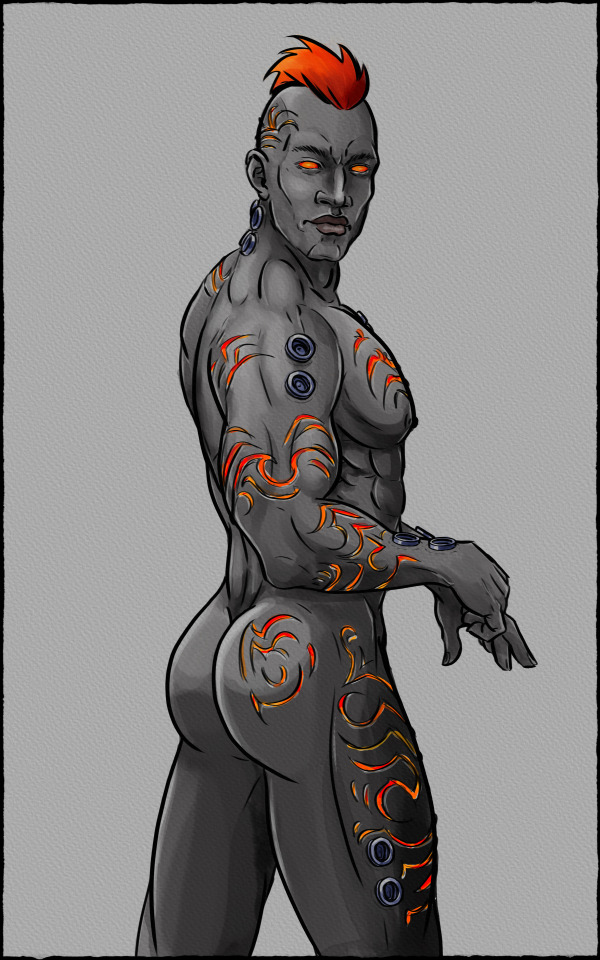
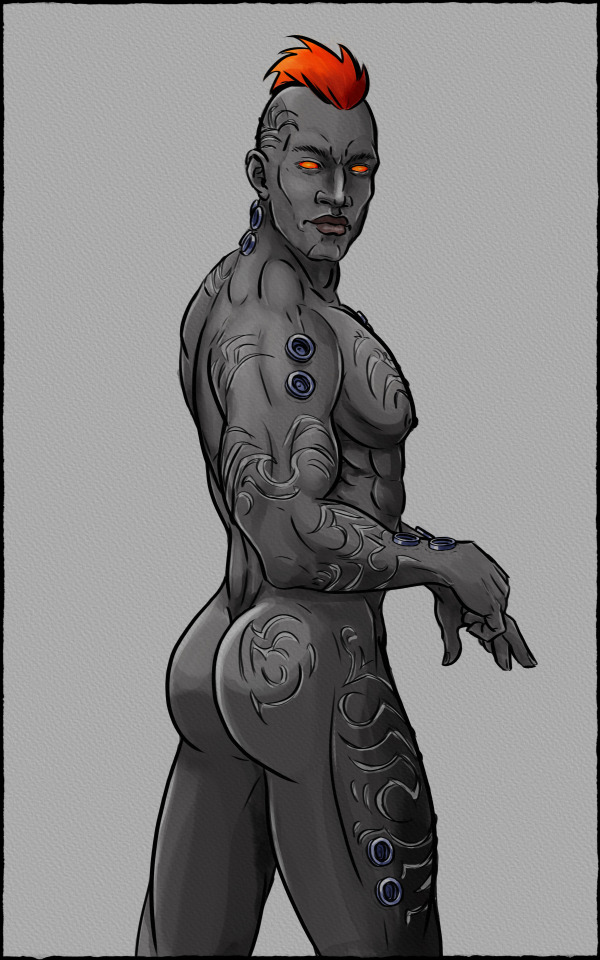
Vulkan He'stan
Two versions of him - or rather his ritual branding scars - for Marine Meat Monday.
The Forgefather leads a lonely life that constantly takes him far away from Nocturne into the depths of the galaxy, where he searches alone on his own for the artefacts that the Salamanders believe hold a key to discovering what happened to their missing Primarch.
Contrary to what was said in TTS, it is not the case that Vulkan will simply appear like Father Christmas once the artefacts are collected. The Salamanders are an incredibly independent, stubborn chapter and firmly believe that nothing is given for free. Especially not their beloved Gene-Sire. Instead, the Tome of Fire and the artefacts offer the opportunity to get clues as to what happened to Vulkan.
And unlike their predecessors during the Horus Heresy, the 40k Salamanders are not at all convinced that he is still alive! The famous war cry "Vulkan Lives!" was definitely a 30k thing. More specifically, coined by Pyre Guard Captain Artellus Numeon, a Terran Salamander who, after Isstvan V, didn't believe Vulkan had been killed and who, after the events surrounding Curze's brief reign of terror in Magna Macragge City, dragged Vulkan's "dead" body across the galaxy. And managed the seemingly impossible.
In 40k, "Vulkan Lives" is no longer the flaming sign of unshakable faith. This is no longer the time of the miracles of the Grand Crusade, after all!
Do they hope he's still alive? Sure! But they are also realists. And that's why they do what's possible with what they have.
And when inexplicable things happen now and then, like a Chaplain's destroyed Crozius still working, or a dead Psyker suddenly becoming a Living Flame and simply disintegrating a Chaos Fleet … well, obviously there is still a lot to find out then!
And Vulkan He'stan is just the man to find out!
When he then emerges from the most inhospitable corners of the galaxy every now and then, he is on the one hand very happy to see Prometheus and Nocturne again, but is constantly only too aware of how far away his task removes him from his brothers. Then he allows himself a little melancholy. Shares with the Chapter Master a little loneliness that they both feel. And then he sets off again to fulfil his task.
Because that's what Salamanders do!
It was at He’stan’s request that they’d come to one of the viewing galleries in Prometheus space port. The long chamber was dark, illuminated by brazier coals. The flickering light revealed the icon of the Firedrakes as they pulled the shadows away, only for it to be swallowed as the darkness reasserted itself again a few moments later. ‘Aye, we are humbled by her savage beauty, Lord He’stan.’ Tu’Shan clapped a firm hand upon the Forgefather’s shoulder.
For He’stan it was an odd sensation. He had been apart from his brothers for a long time. His quest for the lost artefacts of Vulkan had taken him to the edges of known space, to sights he would not describe and deeds he would never speak of. To them, his Fire-born kin, he was an enigma, a distant figure whose ways were inscrutable. It was no small thing to return.
Kyme, Nick. Salamanders: The Omnibus (Tome of Fire) (S.741). Games Workshop. Kindle-Version.
104 notes
·
View notes
Text
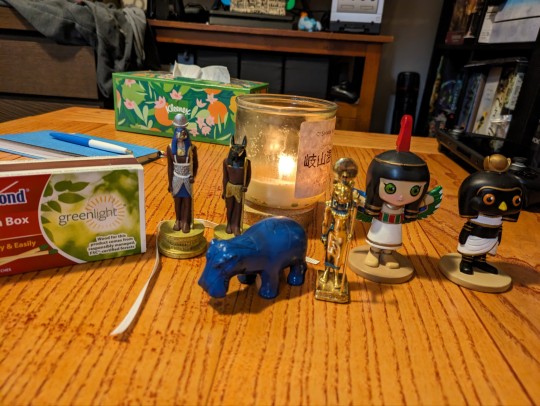
EDIT: all items have been sent to their new homes
I have some miniature gods here that I would like to give away. Help with the cost of shipping is appreciated if you can spare it. Matchbox for scale.
Weegyptians Ma'at and "Horus" (could easily be a Khonsu or Ra)
Tawaret ("William" replica)
Sekhmet
Custom painted chess piece Anpu and Khonsu. The Khonsu comes with a consecrated ribbon from the HoN state icon of Khonsu in His year, if that is heka that is meaningful to you.
All items ship from Boston, Massachusetts. Any that are not claimed by 12/31 will be given away to a local secondhand shop.
#kemetic#kemeticism#kemetic polytheism#kemetic paganism#kemetic fandom#kemetic pagan#egyptian polytheism#egyptian paganism#witchblr#paganblr#khonsu#tawaret#anpu#ma'at#horus#heru#heru wer#heru sa aset#sekhmet#yinepu
26 notes
·
View notes
Note
Hi! After seeing your posts I've been wondering, do you ship anyone in Egyptian mythology. Kind of a crack question but them not as religious figures but more as ancient characters??? Sorry if this seems weird and thank you.
I do! I have lots of ships actually that I'd like to include in my comic somehow as well! Some are actually based on specific local traditions while others,,, are just very random lol
Starting off with the "somehow" canon ones, I ship Hathor and Sobek (I call this ship Sobthor bc it sounds so funny lol), Isis and Min, Nephthys and Osiris (I like, have a thing for unrequited loves but I think that overall they're very cute together), aaand last but not least, this might be a weird one but it never fails to make me laugh genuinely, is the one with Horus and Set and their lettuce romance lol
As for "canonical" ones, I especially like Thoth and Maat and Sekhmet and Ptah, because they're so different I can't help imagining their marital life like some sort of Rom Com lol
As for the random ones, I ship Anubis and Bastet bc they're so iconic that I often see them together in art and other pieces of media I couldn't help thinking how cute they could be together!
Anyways, regarding the last part of your ask, I know it can be a bit of a hard topic for some, especially when it comes to mythology, but honestly speaking, I'm glad you asked bc I like talking about ships! Actually, I would like to listen more to everyone's opinions and ships someday! I think it would be fun to share our ships together! If done respectfully, it's a lot of fun!
8 notes
·
View notes
Text
if i suggested a 1980s or ‘90s band au for xiao or cyno or something, would people be able to understand where i’m coming from?
like… i’m imagining them in ‘90s fashion clothes with a good old rock aesthetic and leather jackets and whatnot, possibly some ripped jeans…
cyno’d definitely have a bunch of egyptian mythology-related tattoos, and maybe dress in a kind of punk-rock style (but more subtle)? and he’d of course have his choker but probably studded with metal or something.
and then xiao might have a slightly more grungy aesthetic focusing around dark colours, and his teal highlights and red makeup and purple diamond would be an iconic combo all his fans know him for and they’d really pop against his dark clothing and he’d make this grunge-rock fashion sense somehow… elegant-ish?
maybe cyno’s band would be called the ‘eyes of ra’ or ‘HORUS’ or something, and he could be lead guitarist and backup singer, maybe? he probably wouldn’t have written that many songs of his own for the band but those that he did are iconic and some of the best-loved with awesome riffs and stuff like that. maybe his guitar pick would be a flattened coin with an eye of ra/ horus pressed into it depending on the band’s name, too, and his guitar would sort of be a purple-indigo colour with some iconic anubis design on it or something… and his hairstyle would be iconic as well and basically his whole existence would be iconic (as he should be.)
and then in interviews on tv or the radio and stuff if they got popular enough he’d be really serious and then crack these jokes out of the blue and it would be amazing.
and i sort of want to be more creative with xiao beyond the usual 4nemo group, so i was thinking he’d be in a band with the other adepti, called ‘protectors’ (possibly spelt with a z instead of an s) or ‘war machines’ or something; and their music would be more heavy metal-ish than cyno’s band but not completely, and cyno’s is more alt rock, maybe? xiao’d be on the bass and one of the main lyricists, occasionally dabbling in rap for some songs, and come up with these really great basslines…
and then their bands would perform in clubs and stuff on weekends or after university, and if they had posters for their bands they’d look so cool and they’d hang them up around the area and i’m spiralling back into that brainrot about the reader being a designer and approached by xiao to make a poster… but that’s besides the point (but could fit very well into this au…)
and obviously both cyno and xiao would have fan groups and simps and all that (and really, who can blame them) and people would stick posters and photos of them on their walls and all that good stuff.
apologies if this was slightly incoherent and unorganised but i needed to word-vomit my brainrots out…
51 notes
·
View notes